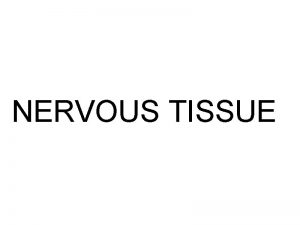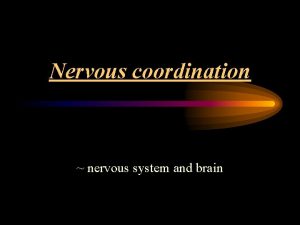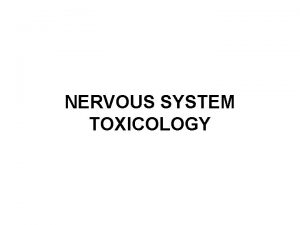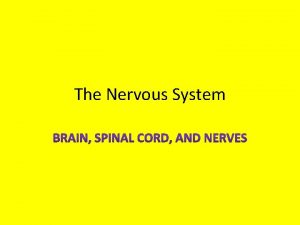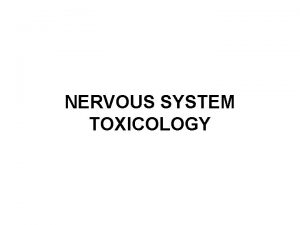CONTROL AND COMMUNICATION Part 1 Nervous Control CONTROL













- Slides: 13

CONTROL AND COMMUNICATION Part 1 Nervous Control

CONTROL AND COMMUNICATION 1. List the main parts of the nervous system 2. Draw a motor nerve cell 3. Identify sensory, relay and motor neurones 4. Outline the importance of simple arc reflexes

The Central Nervous System Brain Spinal cord

Brain section Cerebrum Memory, intelligence Hypothalamus Controls the pituitary Cerebellum Controls posture and balance Pituitary Controls the hormone (endocrine) system Controls breathing and heart rate Medulla oblongata

Motor Neurone

Three types of nerve cells Motor Neurone (effector) relay neurone (connector) Sensory neurone Motor neurones and sensory neurones are part of the peripheral nervous system

CONTROL AND COMMUNICATION Part 1 Nervous Control

Learning objectives • Describe simple reflex arc in terms of sensory, relay and motor neurones, and a reflex action as a means of automatically and rapidly integrating and coordinating stimuli with responses.

The three types are connected

q The reflex arc bypasses the brain q Information reaches the brain after the response (removal of the finger) q This means that the reflex is very quick q The finger is removed quickly before there is further damage to the finger q We can override the reflex arc if we need to move something hot!

Reflex arc NEURON and NEURONE are alternative spellings. They are the same thing!


Question A reflex action is a simple act of behaviour whose function is protective. For example, the eyelid muscle contracts when an object touches the eye. This results in blinking, which helps to prevent damage to the eye. Similarly, when foreign particles such as pepper enter the nasal tract, a sudden contraction of the chest muscles makes the person sneeze and remove unwanted particles from the nose. Although reflex actions are involuntary, some can be partly altered by voluntary means; the person can, to a certain extent, resist blinking or sneezing. Some reflex actions cannot, however, be altered by voluntary means. When food is present in the gut, muscles in the gut wall contract bringing about peristalsis. This muscular movement also ensures efficient digestion by mixing the food thoroughly with digestive enzymes.
 Neuronal pools
Neuronal pools Nervous
Nervous Neuron processes
Neuron processes Central nervous system divisions
Central nervous system divisions Diagram of central nervous system
Diagram of central nervous system Nodes of ranvier
Nodes of ranvier Part whole model subtraction
Part whole model subtraction Unit ratio definition
Unit ratio definition Part part whole
Part part whole Technical description meaning
Technical description meaning Parts of cocktail bar
Parts of cocktail bar The part of a shadow surrounding the darkest part
The part of a shadow surrounding the darkest part Part to part variation
Part to part variation What is oral communication and written communication
What is oral communication and written communication





